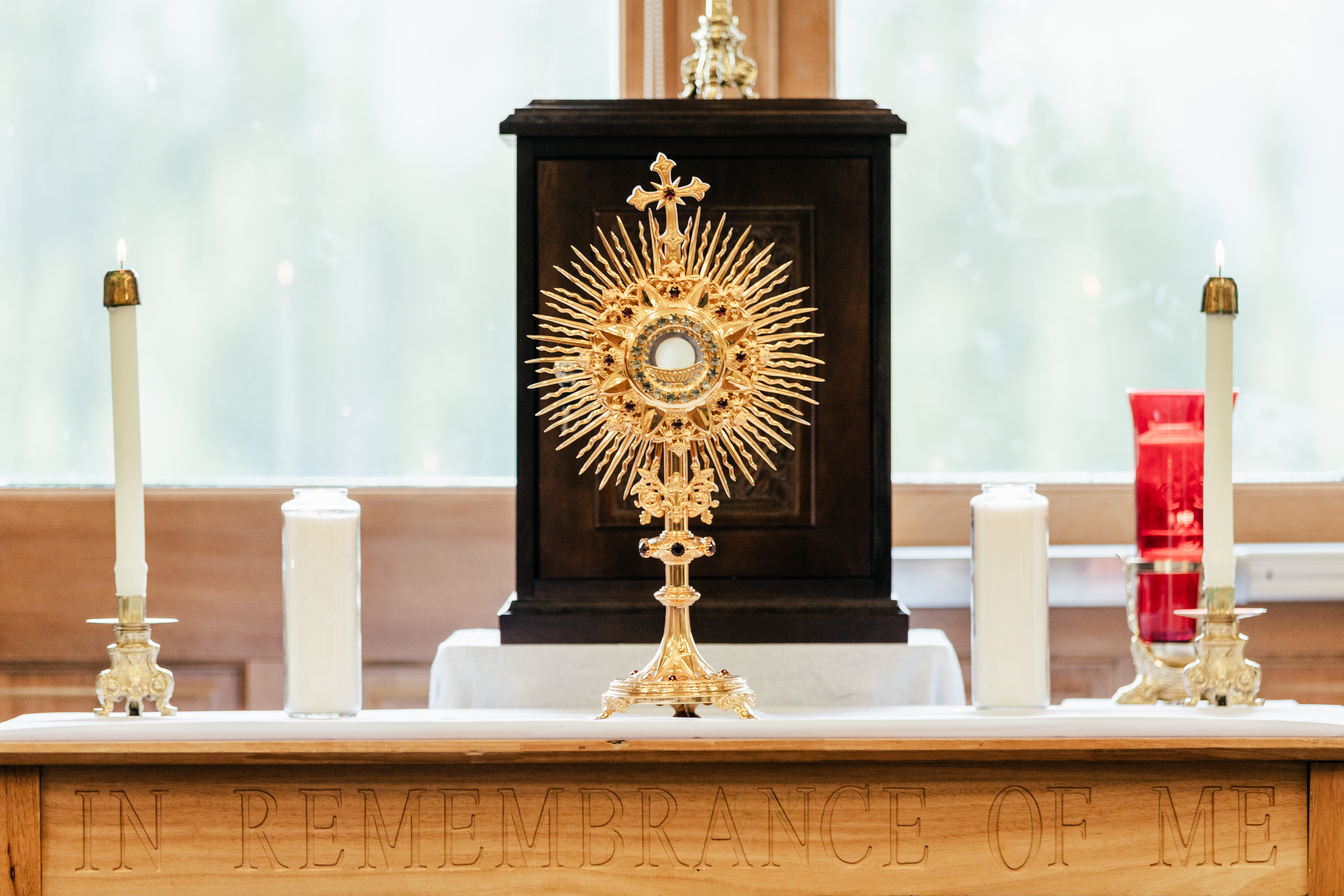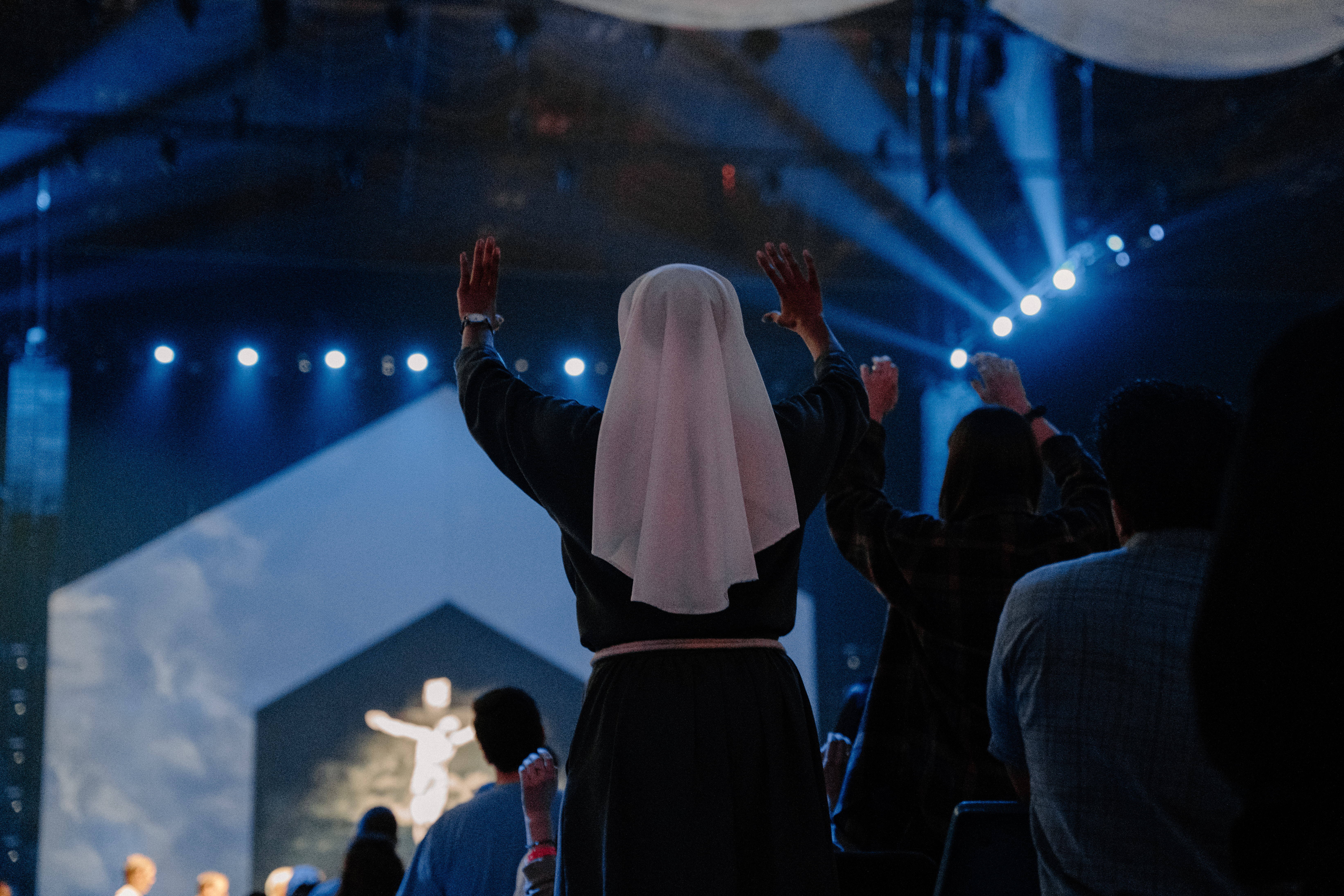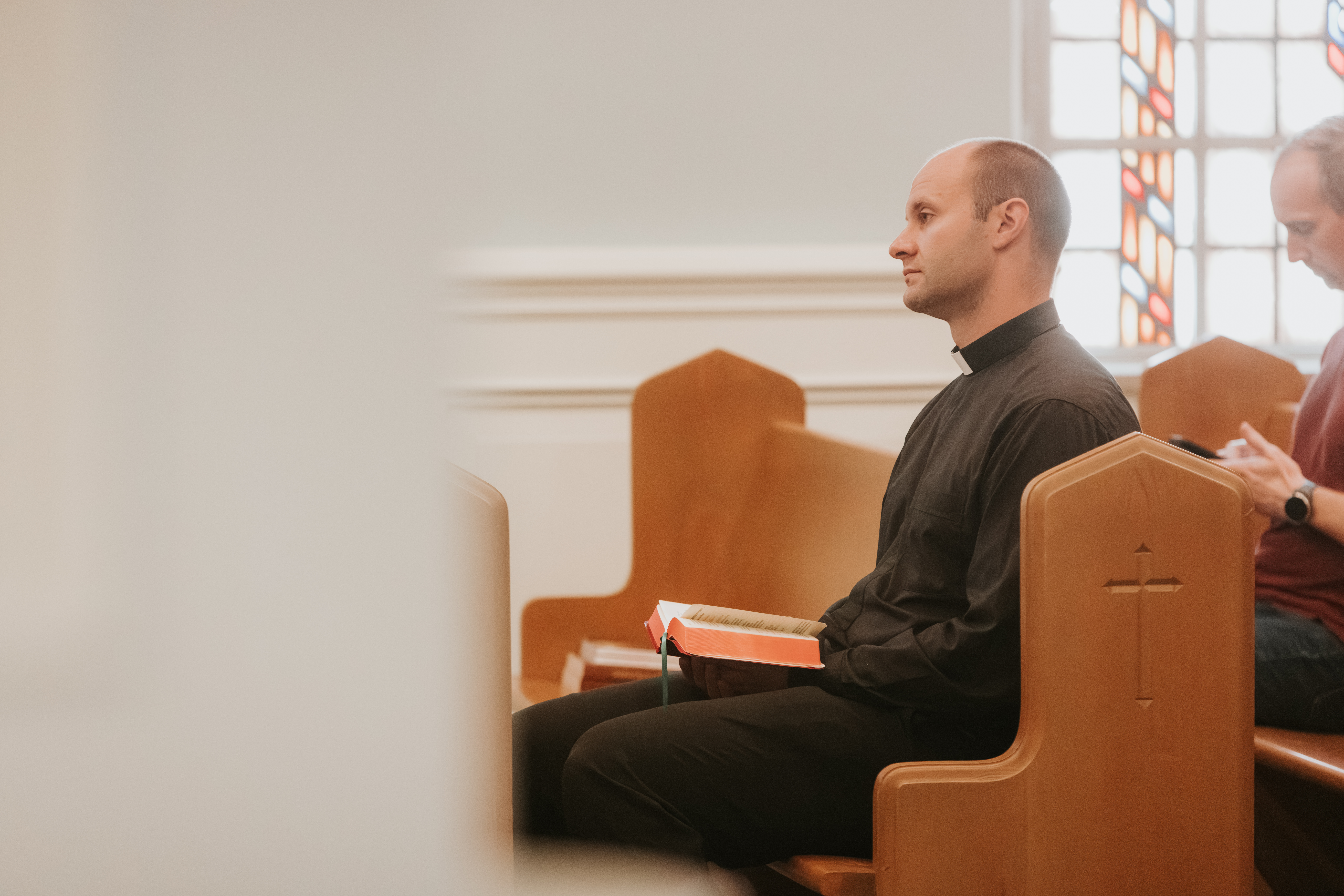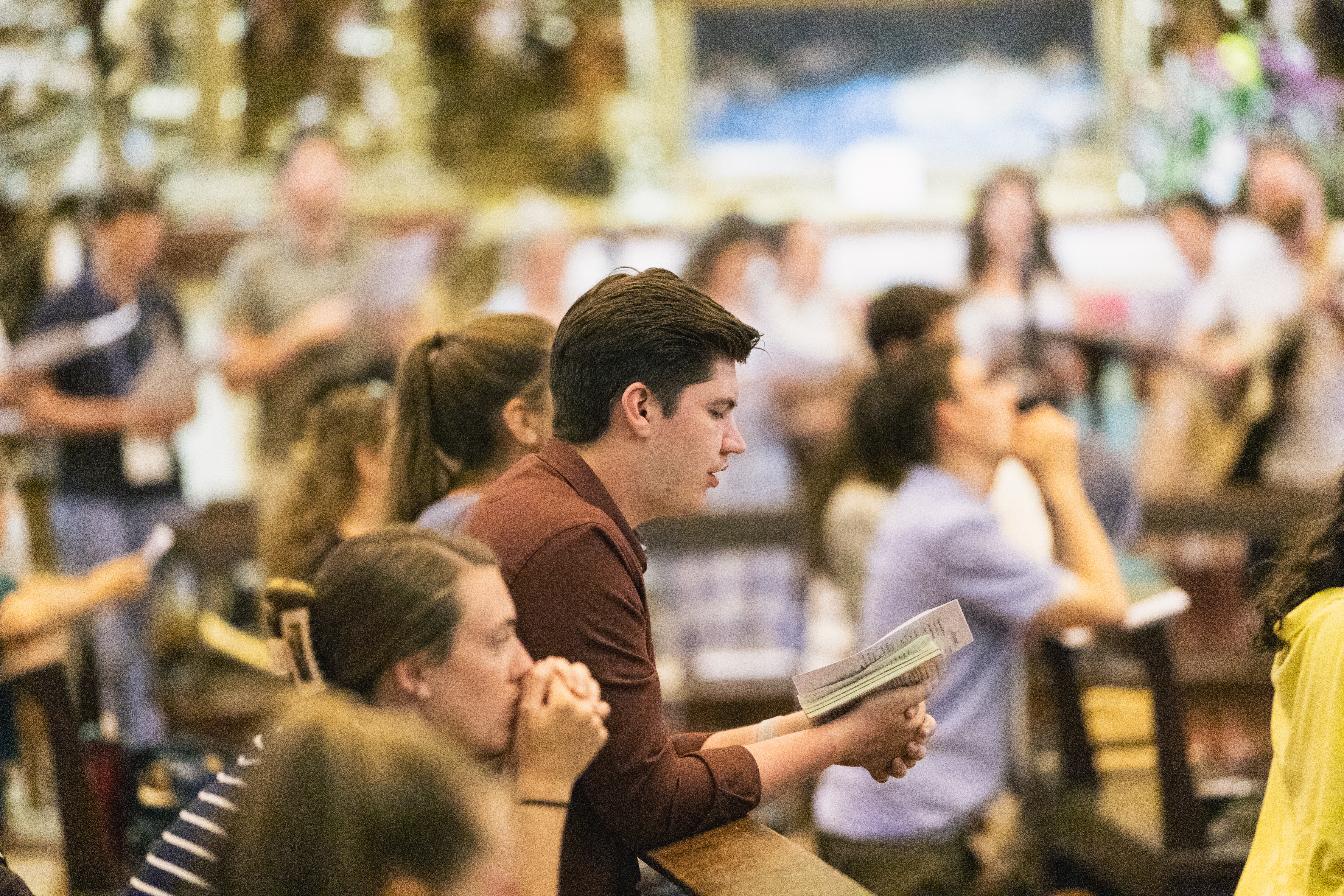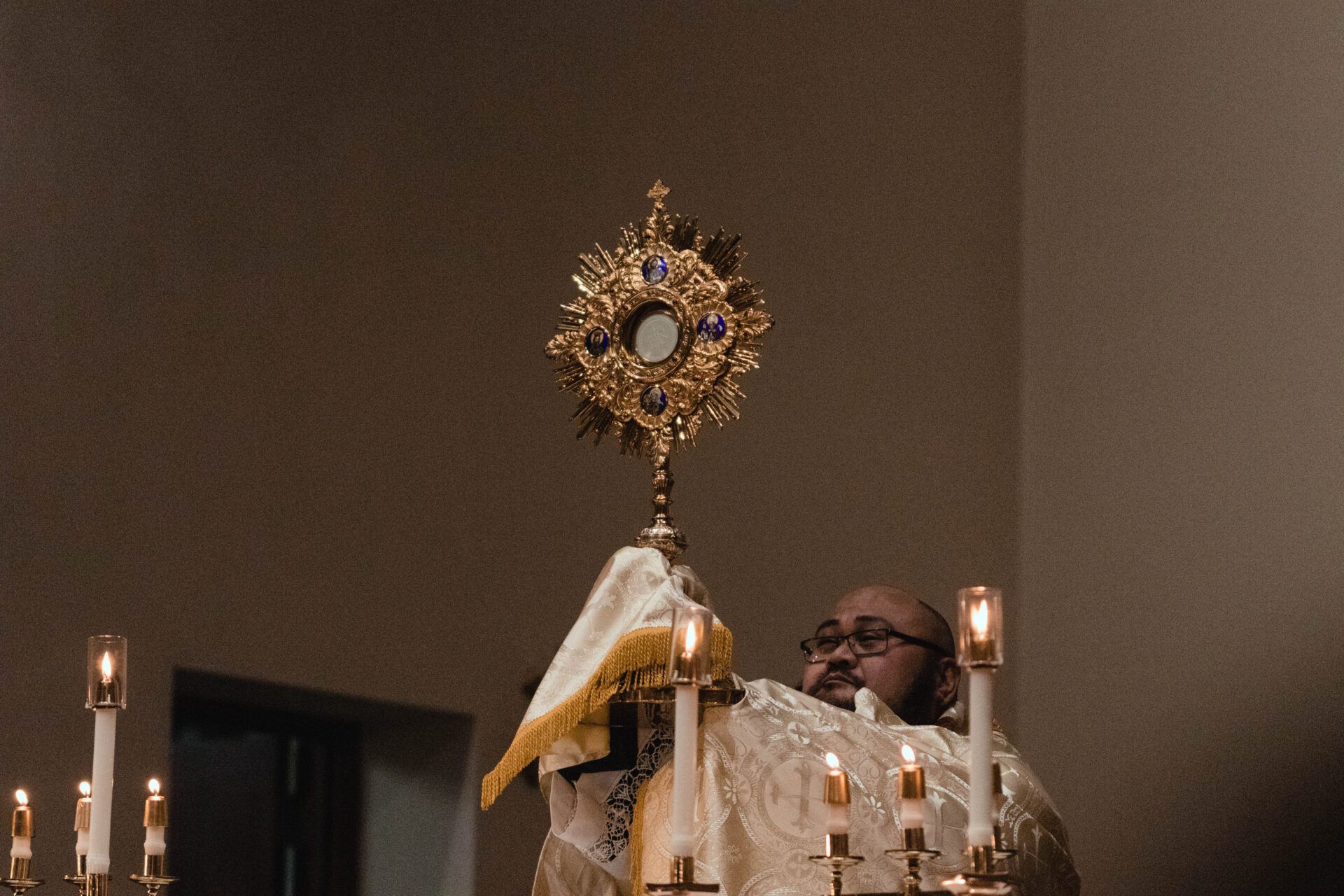Eucharistic Adoration is one of the most beautiful ways to encounter Jesus face-to-face. Whether you’re leading a group of college students, gathering a parish community, or planning a retreat, it helps to have a clear holy hour formats that invite people into prayer. Some participants may be brand-new to Adoration; others may be seasoned adorers. Having a flexible plan makes the hour fruitful for everyone.
Below you’ll find seven different Holy Hour formats—each with its own emphasis and flow. You can print them, adapt them, and rotate through them to keep your community’s prayer fresh and engaging.
1. Guided Holy Hour
Best for: Newcomers or mixed-experience groups
Why: A guided format gently leads people into prayer, helping them know what to expect and giving enough structure to feel confident in silence.
Structure:
-
Opening song & exposition
-
Brief welcome and orientation
-
Scripture reading + guided meditation (5–10 min)
-
Silent Adoration (20–30 min)
-
Communal prayers (Rosary, Divine Mercy Chaplet, etc.)
-
Benediction
Tips: Rotate who offers the meditation—missionaries, students, parishioners, or clergy—so more people grow in confidence to lead.
2. Silent Holy Hour
Best for: Deep prayer, discernment, and reflection
Why: Silence allows space for personal encounter. This format is especially powerful for those discerning a vocation, making a big decision, or simply needing rest in Christ’s presence.
Structure:
-
Simple exposition and silence
-
Quiet background music (optional)
-
Encourage personal prayer journals or bringing Scripture
-
Closing with Benediction or Night Prayer
3. Praise & Worship Adoration
Best for: Youth nights, college students, or evangelistic outreach
Why: Music can open hearts in a unique way. Combining worship songs with Adoration creates a powerful, joy-filled encounter that is especially inviting to those new to the faith.
Structure:
-
Live or acoustic praise & worship music
-
Optional Scripture reflection or personal testimony
-
Alternating time for singing and silent prayer
-
Benediction with a joyful closing song
4. Lectio Divina + Adoration
Best for: Small groups seeking to go deeper with Scripture
Why: Lectio Divina—“divine reading”—guides participants to pray with Scripture in a contemplative way. Coupled with Eucharistic Adoration, it draws people into both Word and Sacrament.
Structure:
-
Opening prayer
-
Slowly read a Scripture passage aloud three times
-
Silent meditation with prompts: lectio (reading), meditatio (reflection), oratio (prayer), contemplatio (rest in God)
-
Extended time before the Blessed Sacrament to sit with the Word
-
Optional group sharing or prayer intentions
5. Rosary or Divine Mercy Holy Hour
Best for: Marian devotion or praying for mercy and healing
Why: The Rosary and Divine Mercy Chaplet are tried-and-true Catholic prayers that unite groups in intercession and devotion. They provide structure while leaving space for silence with Christ.
Structure:
-
Exposition
-
Group recitation of the Rosary or Chaplet
-
Silent prayer with Jesus (10–20 min)
-
Closing with a Marian hymn or prayer
6. Confession & Adoration
Best for: Reconciliation nights, retreats, or seasons like Lent/Advent
Why: The Sacraments of Reconciliation and the Eucharist go hand-in-hand. Making confession available during Adoration gives people the chance to receive God’s mercy and then rest with Him in thanksgiving.
Structure:
-
Exposition
-
Individual Confessions (priests available)
-
Gentle instrumental music or silence during prayer
-
Closing Benediction or group Act of Contrition
7. Intercessory Adoration
Best for: Groups focused on mission or community intentions
Why: Jesus invites us to bring the needs of the world to His Heart. Praying in front of the Blessed Sacrament for the Church, our communities, and global needs strengthens missionary discipleship.
Structure:
-
Opening prayer and exposition
-
Short reading or reflection on mission
-
Guided intercessions (global, local, personal)
-
Silent time with Jesus
-
Closing prayer for the Church and Benediction
Final Note
Every Holy Hour is unique because every encounter with Jesus is unique. Use these formats as starting points, but don’t be afraid to adapt them based on your group’s needs. Whether through silence, music, Scripture, or the sacraments, the goal is the same: to bring people into the loving presence of Christ in the Eucharist.
Additional Resources
Looking for more resources for your parish? Check these out from our blog:
Family-Friendly Guide to Eucharistic Adoration
What Are the Holy Days of Obligation in 2025?
And check out these posts on parish life:
What is a Catholic Retreat and Why Should You Go On One?

